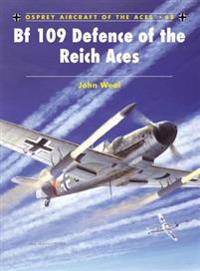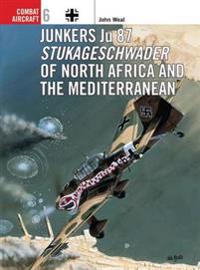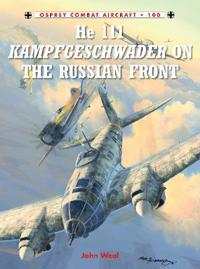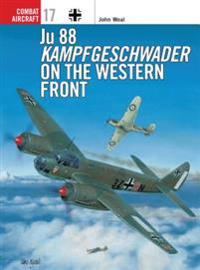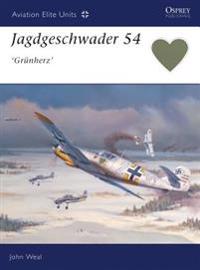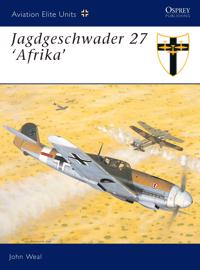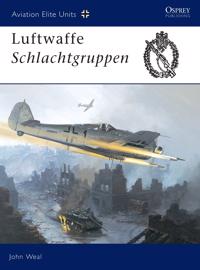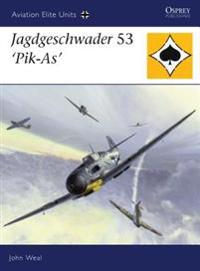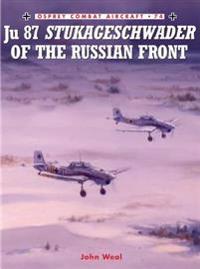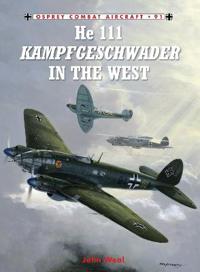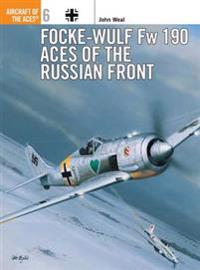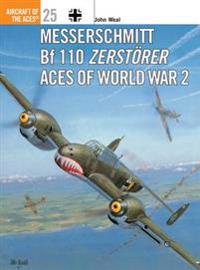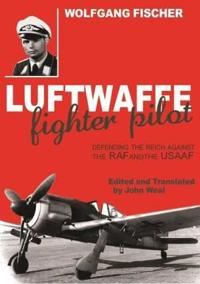Bf 109 Defence of the Reich Aces (Pocket)
avJohn Weal, John (ILT) Weal, John Weal
ISBN: 9781841768793 - UTGIVEN: 2006-02Luftwaffe aces explain their tactics and relate their experiences during the bloody campaign known as the Defence of the Reich. Their missions changed from waiting for the short-range Allied fighter escorts to turn back before attacking the bomber formations, to see-saw battles for aerial supremacy [...]
Junkers Ju 87 (Pocket)
avJohn Weal, John (ILT) Weal, John Weal
ISBN: 9781855327221 - UTGIVEN: 1998-07A detailed work on the Ju 87 Stuka dive-bomber. The terror-weapon of German blitzkrieg on Western Europe, the Ju 87's reputation was hammered in the Battle of Britain, where its vulnerability to fighter aircraft was savagely exposed. Stukas were then sent to the Balkans to aid the Italians, where it[...]
Fw 190 Defence of the Reich Aces (Pocket)
avWeal, John
ISBN: 9781846034824 - UTGIVEN: 2011-02-07This title is the natural conclusion to the collection of titles chronicling the exploits of the fighter pilots of the German Luftwaffe of World War 2 that has been part of - and contributed in some small measure to the success of - Osprey's long running Aircraft of the Aces series. Since the first [...]
Fw 190 Aces of the Western Front (Pocket)
avWeal, John
ISBN: 9781855325951 - UTGIVEN: 1996-05-15The Fw 190 was the scourge of Fighter Command from the moment it appeared on the Western Front at Abbeville in August 1941 with II./JG 26. A nimble, speedy and well-armed adversary, the 'Butcher Bird' quickly proved superior to all Allied fighters of the time, particularly at medium to low altitude.[...]
He 111 Kampfgeschwader on the Russian Front (Häftad)
avJohn Weal
ISBN: 9781780963075 - UTGIVEN: 201307The twin-engined He 111 was the mainstay of the Luftwaffe's bomber arm at the start of World War ll. Accompanied by the Ju 87 Stuka dive-bomber, it provided the aerial striking power for all the early Blitzkrieg campaigns, sweeping all before it throughout the first 12 months of hostilities. Althoug[...]
Ju 88 Kampfgeschwader on the Western Front (Häftad)
avJohn Weal
ISBN: 9781841760209 - UTGIVEN: 200006Undoubtedly the most versatile German aircraft of World War II (1939-1945), the Junkers Ju 88 served as a fighter, bomber and patrol aircraft on every front on which the Luftwaffe fought. Blooded in action during the Blitzkrieg, the Ju 88 soon proved to be a formidable opponent for the beleaguered A[...]
Jagdgeschwader 54 Grunherz (Häftad)
avJohn Weal
ISBN: 9781841762869 - UTGIVEN: 200111One of the most successful of the high-scoring Luftwaffe Jagdgeschwader during World War II, JG 54 "Grunherz" ("Green Hearts") was formed from three disparate fighter "Gruppen" immediately prior to the Battle of Britain. Having enjoyed immediate success over the Channel and south-east England during[...]
Jagdgeschwader 27 Afrika (Häftad)
avJohn Weal
ISBN: 9781841765389 - UTGIVEN: 2003-05Synonymous with the Afrika Korps and the campaign in North Africa, JG 27 provided Rommel's army with fighter protection for virtually the whole 'roller coaster ride that was the war in the Western Desert from 1941-43. Formed in Germany on 1 October 1939 (with Adolf Galland as CO of I.Gruppe), JG 27 [...]
Luftwaffe Schlachtgruppen (Häftad)
avJohn Weal
ISBN: 9781841766089 - UTGIVEN: 200310One of the most important, and yet least publiscised, components of the front-line Luftwaffe was the Schlacht, or ground attack, arm. This book details the Schlacht units who were in the thick of the fighting from the first day of the war until the last. They played a vital part in the heady success[...]
Luftwaffe Sturmgruppen (Häftad)
avJohn Weal
ISBN: 9781841769080 - UTGIVEN: 2005-10By the spring of 1944, hundreds of American heavy bombers were venturing deep into occupied Europe, escorted by ever increasing numbers of Mustangs, Thunderbolts and Lightnings. In a desperate attempt to deal a single knock-out blow to the Allied daylight bomber offensive, an outstanding band of Luf[...]
Jagdgeschwader 53 'Pik-as' (Häftad)
avJohn Weal
ISBN: 9781846032042 - UTGIVEN: 200712Arguably the archetypal Luftwaffe fighter unit of World War 2, JG 53 aircraft were encountered on almost every fighting front from the first day of hostilities until the last. During almost six years of near-constant campaigning, JG 53 took a steady toll of Allied aircraft in every theatre it fought[...]
Ju 87 Stukageschwader of the Russian Front (Häftad)
avJohn Weal
ISBN: 9781846033087 - UTGIVEN: 200808This final volume of the Osprey trilogy on the infamous Luftwaffe dive-bomber charts its fortunes in the toughest theater of all: the Eastern Front. The fearsome reputation that the Stuka had enjoyed in the opening months of World War II (1939-1945) was shattered over the English Channel in the summ[...]
He 111 Kampfgeschwader in the West (Häftad)
avJohn Weal
ISBN: 9781849086707 - UTGIVEN: 201202"He 111 Kampfgeschwader in the West".
Focke-Wulf FW 190 Aces of the Russian Front (Pocket)
avJohn Weal
ISBN: 9781855325180 - UTGIVEN: 1995-12Of all the fronts fought on by the Jagdflieger during World War 2, the Russian, or Eastern, was easily the most lucrative in terms of targets for the experten. Marry an abundance of targets with the Luftwaffe's best piston-engined fighter of the war - Focke-Wulf's Fw 190 'Butcher Bird' - and it quic[...]
Junkers Ju 87 (Häftad)
avJohn Weal
ISBN: 9781855326361 - UTGIVEN: 1997-05The cranked-winged Ju 87 Stuka dive-bomber symbolized the might of Nazi Germany in the early years of World War II. Although vulnerable to enemy fighters due to its modest speed and lack of manoeuvrability, it nevertheless took a heavy toll of the Allied forces in Western Europe. This volume covers [...]
Messerschmitt Bf 110 Zerstorer Aces of World War 2 (Häftad)
avJohn Weal
ISBN: 9781855327535 - UTGIVEN: 199905This volume is the first of its type to be devoted exclusively to the Zerstorer day fighter aces, spanning the war years from Poland to the defence of the Reich. Although Messerschmitt's single-engined Bf 109 has received most of the plaudits for achieving virtual air superiority over Europe in 1939[...]
Luftwaffe Fighter Pilot (Inbunden)
avWolfgang Fischer, John Weal, Wolfgang Fischer
ISBN: 9781906502836 - UTGIVEN: 201011Within weeks of war being declared, Wolfgang Fischer had volunteered to join the Luftwaffe and spent nearly five of the succeeding six years of hostilities in uniform. During this time he was given a succession of postings varying from a long-range recce unit; as a decoder in a met office in occupie[...]

